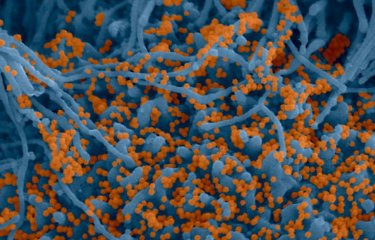-
Document de presse | 2004.09.21
Stem Cells and Skeletar Muscle: a Pagadigme Revised
Two groups at the Institut Pasteur in association with the CNRS (French National Scientific Research Centre) have called into question a 10-year-old paradigm by showing that three genetic factors, and not two as commonly believed, determine skeletal muscle identity from stem cells. This work, published on September 23rd in Nature, changes our view of the determination of muscle cells, and of the...
-
Document de presse | 2004.09.19
New possibilities for fighting the plague
The plague, one of the most dangerous bacterial diseases for man, is currently reemerging in the world. Comparative genome work coordinated by researchers at Institut Pasteur and at Lawrence Livermore National Laboratory in the US, has shed light on the genetic bases that accompanied the emergence of the extremely virulent plague bacillus from a much less pathogenic ancestor, less than 20,000...
-
Document de presse | 2004.09.08
Human Genome: A New Mutagenic Phenomenon Revealed
Researchers from the Institut Pasteur associated with the CNRS have recently demonstrated the importance of the insertion of small sequences of mitochondrial DNA in the human genome (Public Library of Sciences, 7 September 2004). These insertions are potentially mutagenic and may be connected with serious pathologies. This research could enable the development of new diagnostic tools for cancer...
-
Document de presse | 2004.09.05
Toward a New View of Heredity: the Launch of the European "Epigenome" Network of Excellence
The official launch of the "Epigenome" Network of Excellence will take place 24 September 2004, in Brno (Czech Republic) during the first meeting of this consortium's partners. The "Epigenome" Network brings together 25 European laboratories that are leaders in the field of epigenetics, from 6 European countries, including two French groups: those of Geneviève Almouzni (...
-
Document de presse | 2004.05.24
Stem Cells to Repair the Liver: Progress with animal models
Hepatic insufficiency, cirrhosis, liver cancer, etc.: damage to the liver is varied and in serious cases the only alternative is to transplant a healthy organ. However, the lack of available organs limits this practice: in France in 2002, 882 liver transplants were carried out for 1,509 transplant candidates.* Hope for the future is directed towards being able to transplant stem cells capable of...
-
Document de presse | 2004.04.05
Listeriosis : the mecanisms for crossing the placental barrier deciphered
A study conducted by Marc Lecuit from the Bacteria-Cell Interactions Unit (1) of the Institut Pasteur, which is directed by Prof. Pascale Cossart, has made it possible to uncover how the bacterium Listeria monocytogenes targets and cross the placental barrier in pregnant women. The crossing of the placental barrier leads to serious fetal infections, fetal death, miscarriages, premature births and...
-
Document de presse | 2004.03.17
World Tuberculosis Day (March 24): The Institut Pasteur engaged in the fight
With a third of the world's population infected, 2 million deaths and 8.5 million new cases each year, tuberculosis (TB) is the number two infectious disease in the world after AIDS, without sparing France, where 6300 new cases occurred last year. The prevalence of the resistance to antibiotics and the emergence of multiresistance are worrying at the international level, and is a risk for...
-
Document de presse | 2004.03.14
A new step towards using neural stem celles to repair the brain
A team from the Institut Pasteur associated with the CNRS has just identified a key molecule in the brain capable of attracting new neurons and guiding them towards areas that they could repair. This discovery, previewed on the site Nature Neuroscience (http://www.nature.com/neuro/), brings to the fore a molecule essential for the organization of neuronal circuits in adults. This introduces...
-
Document de presse | 2004.02.19
Rift Valley Fever: New Therapeutic Targets and a Candidate Vaccine in Trials
Research teams from INSERM and the Institut Pasteur have just discovered the virulence mechanism of the Rift Valley Fever virus. This virus, often fatal in humans, regularly decimates herds of livestock in Africa. Understanding the interactions between the host and this virus should make it possible to identify new therapeutic targets against Rift Valley Fever. This research, published in the...
-
Document de presse | 2004.02.19
Institut Pasteur/ Inserm : Joint research on the Nipah virus
Two teams from the Institut Pasteur and Inserm, in co-operation with Malaysian researchers, have recently successfully tested a candidate vaccine against the Nipah Virus. This virus, still undiscovered in 1998, was responsible for the deaths of 105 people in Malaysia in 1999. It is expanding at an alarming speed in South-East Asia. Currently there is no treatment in the fight against this...


